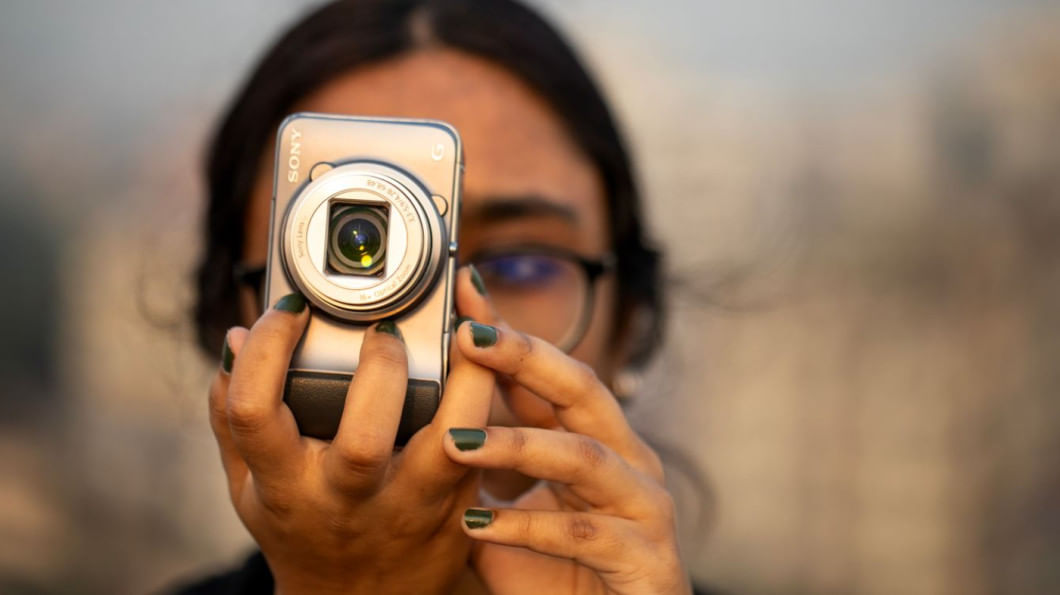Digital cameras, a personal electronic device so popular and widespread in the 2000s, became a relic of the past due to the advent and rapid improvement of smartphone cameras over the past decade. Famous US photographer Chase Jarvis once said, "The best camera is the one that's with you." As smartphones became an everyday carry for us, the digital camera got left behind in the early 2010s.
Fast forward ten years, and now we're seeing a global uptick in digital camera purchases. Be it for the old-school vibes of the photos on TikTok, the social aspect of using an actual camera, or just a sense of nostalgia for a time when shutter buttons physically clicked, consumers are returning to this piece of tech and picking up point-and-shoots anew.
When the smartphone revolution happened, we became obsessed with cramming every possible necessity into this one device. As a result, almost all of us now carry glass-slab supercomputers in our pockets capable of taking detailed photos through a mix of upgraded optics and software enhancements. After tweaking these near-perfect photos with a filter of our liking, they can be uploaded to our social media profiles right on the smartphone. How efficient!
Yet photography enthusiasts yearn for something more personal, removed from the notification boxes of nuisance our smartphones have become. They want something separate to pursue this hobby, but don't want to invest in a heavy DSLR or a mirrorless camera that breaks the bank. They want something small and pocketable. Simple digital cameras like Sony's much beloved CyberShot lineup, Canon's IXUS, or Nikon's Coolpix fit nicely into this niche.

The act of using an actual camera instead of a smartphone to take photos has become so unusual that it instantly feels like an event. It's a definite conversation starter, inciting curiosity and a sense of whimsy, providing an excuse to indulge in memories of family photoshoots and friends' group shots.
Digital or instant cameras have become so obscure now that owning one is cool again. It's so cool, in fact, that Gen-Z wants to be photographed just holding the camera. Instant cameras have the extra advantage of printing the photos out and handing them to your friends right away. A physical gift for a change, not something you Airdropped or sent via WhatsApp.
Fujifilm's Instax mini-series comes in bright colours, while the mini-EVO emulates vintage leatherbound cameras. Polaroid, the company synonymous with instant photography, is still in the game with its recent lineup, including the I-2, NOW, NOW+, and Go series.
There's a Japanese concept known as jinba-Ittai, which translates to the rider and horse becoming one. Similar to this concept, photo enthusiasts want something personal to take photos with. Something they can hold to their faces, look down the optical viewfinder, and capture a moment by pressing down on a tactile shutter button. They want dials, rotors, and buttons that give them quick access to ISO and shutter speed adjustment. They want manual focus to adjust the natural depth of field a lens can produce.
Most enthusiasts and tech aficionados already own DSLRs or mirrorless cameras, but they need something capable and compact. The point-and-shoot lines such as Sony's RX100 or ZV series, Canon's PowerShot G series, and similar offerings from Leica and Fujifilm dominate this segment of the market.

Coming to photo quality, it hugely varies from basic digital cameras to premium point-and-shoots. But across the board, the photos have a more balanced colour science. Photos from the premium point-and-shoots turn out images with a more natural shallow depth of field than portrait modes on smartphones. They look less processed because, in fact, they are less processed. What you see on your optical or digital viewfinder is what you get in the photos, and photo enthusiasts prefer this natural look to the artificial tinge of iOS or Android's image processing. On basic point-and-shoots, users get softer images with more vibrant colours and a blurry quality to them, which resembles many of the filters we now use. Instant cameras print out Polaroids with the option to print them with retro filters like sepia, grayscale, or vignette. Most of these cameras offer Bluetooth or Wi-Fi transfer of photos, with brands like Sony, Canon, Fujifilm, and many more supporting smartphone apps for lossless transfer of digital images.
You can buy these cameras brand new from Bashundhara City, Jamuna Future Park, Multiplan Centre, and other tech hubs, or you can buy second-hand cameras from Gulistan, Motalib Plaza, or online. Buying second-hand gear is always a risk, though, so make sure you avoid sketchy places with unbelievable deals, stick to trusted retailers, and test the device before buying it.
Photography is a hobby that demands time and patience. Getting the right camera will obviously put you off to a good start. But at the end of the day, you can take a good photo with almost any camera, and it's more important to have fun with your photography. Instead of getting all caught up in learning all the settings and trying to click professional photos from the start, start taking photos, and the specifics will come to you. Have fun with the trial-and-error process and say "Cheese!" before taking group shots.
Note: We would like to extend our gratitude to The Analogue Cache for providing us with the cameras photographed here.
Mehrab Jamee is an activist at Sandhani, a 5th-year medical student, and writes to keep himself sane. Reach him at [email protected]







Comments